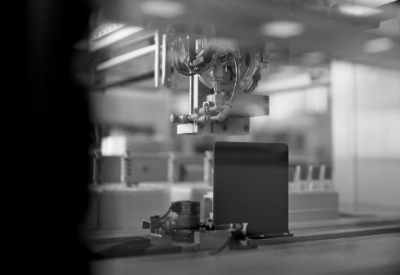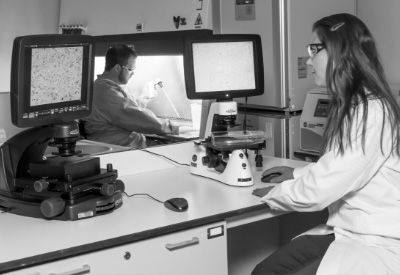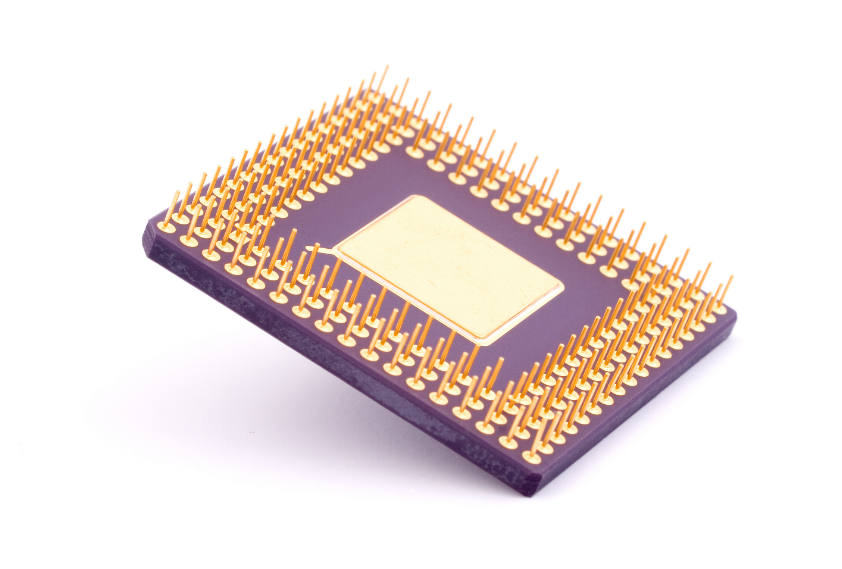How Microelectronics Can Be Used for National Security
National security is a complex field that works toward protecting everyone around us. The sheer number of devices and people working for our safety at any given moment is tremendous. As technology continues to become more efficient and compact than ever before, new defensive strategies arise.
City Labs has dedicated itself to designing a reliable and durable nuclear battery that can power microelectronics long-term. The improvement and increased development of microelectronic devices will lead to novel uses in industries like defense and security.

Challenges in Powering Microelectronic Devices
Developing new microelectronics for military use will require the development of adequate power sources. While lithium-ion and other electrochemical batteries are commonly used, they are unreliable in certain extreme conditions. That’s why there is a trend towards using radioisotopes in microelectronic batteries.
When it comes to nuclear batteries, however, there are new obstacles that must be overcome. Radioactive materials are often expensive and difficult to acquire. Radioisotopes that can produce large amounts of energy may also emit significant radiation. Finding a balance between sufficient power and materials that are safe and affordable can be difficult.
Betavoltaic Power Sources for Microelectronics
Nuclear batteries can harness the natural radiation of isotopes to produce a more steady, predictable, and longer current than traditional batteries. Betavoltaic batteries capture beta particles from decaying isotopes and convert their kinetic energy to electrical power. These power cells can output a constant flow of energy in extreme conditions for decades without maintenance.
Tritium beta decay is among the mildest forms of radiation and can be shielded in low concentrations with thin protection. Learning how to use isotopes like tritium for long-term low-energy microelectronic devices can improve defense efforts globally.
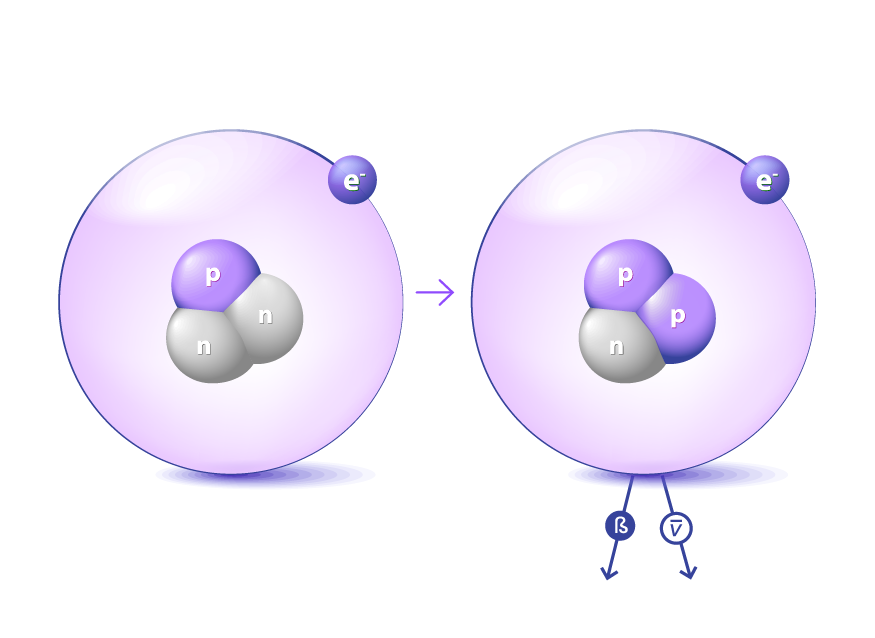
Microelectronics Goals for Defense
Since their inception, microelectronic devices have been used in the defense industry. A variety of microelectronic conductors, sensors, and switches are already essential to military operations. The current objective is to continue improving those components to perform better, longer, and in more extreme conditions.
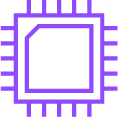
Improve Long-Term Access to New Technology
Beyond what microelectronic devices can do on their own, they also open the gates to a wealth of new technology. They can monitor the performance and status of larger, more complex devices.
Experts in the field are trying to improve microelectronics accessibility across more industries. Microelectronic device compatibility could improve surveillance, security, remote piloting, defense systems, etc. Microelectronics’ future in defense depends on the ability to integrate new technology with old.

Microelectronics as a Central Part of Military Operations
The military is noticing the potential impact of microelectronic devices being decentralized. In the past, the U.S. has been heavily reliant on foreign countries for much of its semiconductor production.
The U.S. Government recently passed the CHIPS Act, which provides more than $52 billion for microelectronics research and development. This money will support domestic semiconductor production to lessen dependence on the overseas supply chain.

Increase Workforce Potential
Another goal in the defense microelectronics industry is to increase the number of experts in the field. With the rapid expansion of microelectronic devices, there will be a growing demand for those who understand and can work with the technology.
Microelectronic expertise is rare and difficult to attain with current training programs. Money from the CHIPS Act will be used to build the industry and subsidize microelectronics companies.
Types of Microelectronics Devices for Defense
Power Sensors Used in Military Applications
One of the most essential devices in the defense industry is the electrical power sensor. Innovations in surveillance, communication, and transportation depend on these simple sensors to create an intricate network observation. The military uses the following:
- Active sensors can locate objects in their vicinity through the use of signals or light wavelengths. They are used in navigation, air defense, surveillance, search and rescue, and sonar technology. They often use an internal radiation source to illuminate their surroundings.
- Wearable sensors can be worn directly on the body and transmit data for both training and real-world purposes. They can be used to track soldiers and improve communications. They are compact and durable to accommodate a moving individual.
- Camera sensors help detail changes in the environment and supplement surveillance systems. They can help track targets and identify faces or movement.
- MEMS sensors (micro-electro-mechanical systems) are a type of sensor that detect the pressure changes inside of aircrafts, accumulate data in satellites, and identify whether unknown vehicles are friend or foe. They are compact, reliable, and cost-effective.
- Infrared sensors can help to detect different types of weaponry that may be missed by the naked eye. Certain chemicals and explosives may be hard to detect without the help of infrared technology.
Large Device Controls
Monitoring large military machines or vehicles is more accurate with the aid of microelectronic devices. Small switches can be used to control machines remotely. Microelectronics enable more effective surveillance and device piloting with a lower risk. City Labs can power those microcontrollers.
Complex military machines rely on smaller components to remain operational. Improving those components is one way to make the overall system more reliable.
Semiconductor Military Applications
Semiconductors and integrated circuits are basic microelectronic components of many different devices.
Semiconductors are essentially switches that control the flow of electricity when presented with a certain stimulus. Integrated circuits are a congregation of semiconductors in the same space that help to control more complex processes. Many of the devices used by the military—and in our everyday lives—contain semiconductors.
Each of these types of microelectronic devices can be employed in some capacity for defense and security purposes.
The Importance of NanoTritium™ Batteries for Surveillance and Homeland Security
Another area where NanoTritium™ batteries have garnered significant attention is their broad potential applications for safeguarding national security interests. With their exceptional resistance to temperature, vibration, and radiation, these batteries have emerged as pivotal components in various defense initiatives, including surveillance and homeland security operations.
One key area where NanoTritium™ batteries excel is in powering satellite instrumentation—specifically sensors—which tend to require low amounts of power. Uninterrupted and long-term power is highly desirable for space satellites due to repair difficulties, and would be especially beneficial for surveillance satellites, where effective operations have national security consequences.
NanoTritium™ batteries guarantee uninterrupted functionality over 20+ years, even in the harsh conditions of outer space. As demonstrated by City Labs’ collaboration with the U.S. Space Force in developing satellite image sensors, these batteries offer a reliable power source equipment for remote sensing and military surveillance applications.
NanoTritium™ batteries also boast important benefits for ground-based operations where their long-term power and vibration resistance owed to their solid-state design makes them ideal for powering sensitive information that may be subjected to combat settings. City Labs recently partnered with the U.S. Air Force to enhance communications security (COMSEC) measures, developing tritium-based AA batteries tailored for COMSEC crypto key security, as well as exploring ultra-low power designs for security-critical standby power for COMSEC systems.
These innovative approaches to safeguarding sensitive communications bolster the resilience and longevity of defense communication networks and minimize the logistical burdens and safety risks associated with frequent battery replacements. City Labs’ strategic collaborations exemplify the potential of NanoTritium™ batteries for bolstering our nation’s security infrastructure, underscoring our commitment to continually advancing our nuclear battery technology to effectively safeguard America’s national security interests.

City Labs NanoTritium™ Batteries Provide a Long-Term Power Source
Our betavoltaic power sources convert tritium radiation into electricity. Tritium batteries can output steady energy for over 20 consecutive years and do not sustain permanent damage from harsh conditions. City Labs excels at powering devices in extreme temperatures and remote locations.
Many of our partners have already found innovative ways to use our batteries—you could be next.
The Nuclear Battery Company with a Vision
Reach out to us to discuss your platform’s power needs and how City Labs’ power solutions can help it run longer and more efficiently.
Contact Us Today
